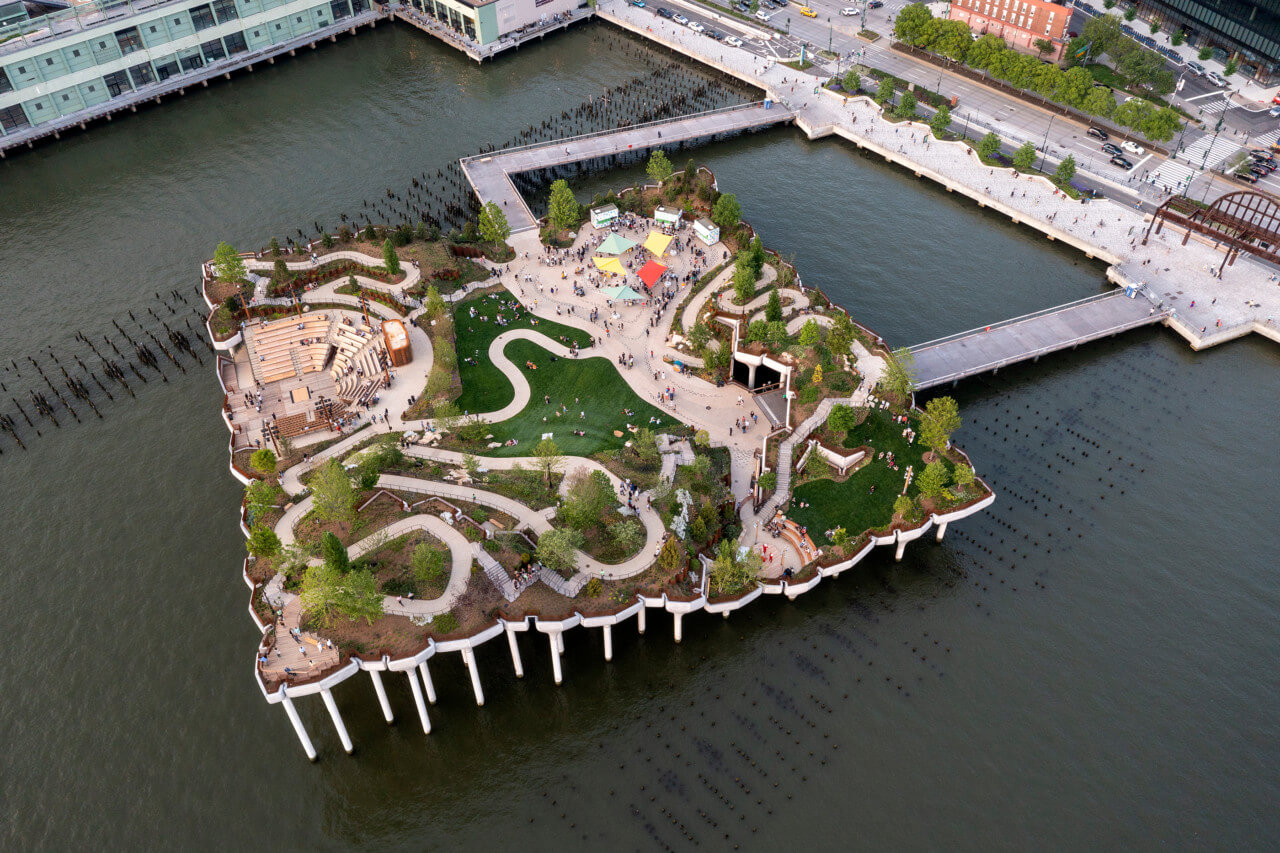Manhattan’s Far West Side, that one-time bustling entrepot-turned-dreary postindustrial terrain, has undergone significant changes in the past two decades. The 550-acre Hudson River Park has been the primary catalyst in the area, absorbing former decaying piers as it expanded southward. Now, after years of litigious drama that would make Cellino & Barnes blush, the park welcomes its newest and certainly most fanciful addition: Little Island.

The much-hyped 2.4-acre public park (free reservations are required to enter) was designed in tandem by New York landscape architecture firm MNLA and the London-based Heatherwick Studio—the former was responsible for the landscaping up top while the latter designed the structure proper alongside Arup. (The project’s hefty $260 million price tag was fronted by billionaire Barry Diller.) The titular “island” rests atop hundreds of concrete piles and tulip-shaped pots, connected by a cast-in-place concrete slab. The assemblage is eye-catching, particularly at the park’s entrance, where the tulips meet end-to-end to form a portal, and at the southwest corner, where the undulating landscape crests at a height of 62 feet.
Little Island’s bowl-life configuration envelopes visitors in a wealth of textures and material contrasts. Weathered steel sheet piles and fencing terrace the soil and flank meandering pathways of red-yellow aggregated concrete and worn Black Locust stairwells. Great blocks of quartzite sourced from Lake Champlain have been purposed as monumental steps; they are meant to be traipsed, MNLA founding principal Signe Nielsen, reminded a concerned mother as her child rappelled away at the park.
“We were very much inspired by the design of Japanese stroll gardens, in that Little Island is a place of contemplation and conversation within the city,” said Nielsen. “And the S-shaped curvature of the meandering paths and stairwells provide exciting shifts in perspective of the Hudson River, and sites across the Manhattan.”
Little Island’s rollicking topography would present a formidable challenge to even the most talented landscape architect, and it is to MNLA’s credit that the site’s many microclimates and sightlines are highlighted to full effect with hundreds of species and varieties of flora. Where sunlight is lacking, such as at the base of interlocked sheet piles, MNLA has placed shade-tolerant ferns and bulbs; and the more sun-soaked segments comprise a fiery riot of azaleas and dogwoods, among many other perennials, grasses, vines, and bulbs. Trees ranging from evergreens to more leafy seasonal varieties shade the pathways and communal areas.
Visitors—but not their pets or bicycles—are invited to recline on the sides of hillocks, while those looking for a firm perch can take to the island’s two performance areas, which feature seating produced by the Brooklyn fabrication studio SITU. Programming in the nearly 700-seat west-facing amphitheater and the more intimate Glade to the south is set to kick off in June.